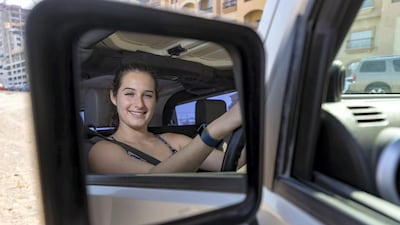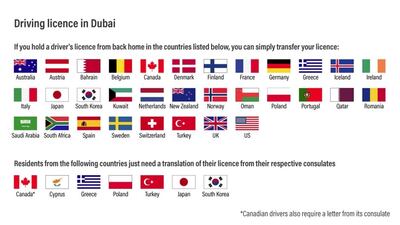For any driver accustomed to taking on the UAE’s labyrinth of motorways, the risks have long been obvious.
A combination of high speeds, tailgating and frequent mobile phone use can and often does lead to tragic consequences.
Recent figures, however, suggest a much-needed government push to improve road safety over the last few years has had an impact.
But there are still areas where improvements could be made. Stricter driving test requirements, for example, would likely boost standards behind the wheel.
Over the summer, Abu Dhabi announced the scrapping of its buffer zone policy – where motorists were permitted to drive 20kph faster than advertised speed limits – and in 2017 a new federal law made wearing seat belts compulsory.
Government statistics, too, suggest improvements. In 2017 there were 4.4 road deaths a year per 100,000 people across the UAE, down from 6.1 in 2016. The comparative UK figure is 2.9.
Charlotte Oswald, 22, said she recently completed her driver training in Dubai and had found the experience “challenging” but useful.
The web developer from Uccle, Belgium, said the blend of cultures and nationalities on UAE’s roads made for an interesting mix of styles and standards, with motorists from one country accustomed to driving very differently from others.
“By learning in Dubai it was easier to deal with all the different driving cultures on the road here,” she said.
“It is so different driving here compared with other parts of the world,” she said. “That’s why learning in Dubai – with all its different driving cultures – was so useful to me.
“You learn much more about defensive driving here because you need to. You become wary and more alert, always looking out for other drivers on the road.
“If I’d already learnt to drive somewhere else, getting used to the roads here would have been much more difficult.”
On the test itself, however, Ms Oswald was less enthusiastic. “It was me, the driving examiner and two other people doing their tests in the car at the same time,” she said.
“We took turns doing our tests and it was all over in 20 minutes. That was it.”
Current requirements to pass a driving test in the UAE vary according to which emirate learners are taking it in.
In Dubai, motorists have to compete 40 half-hour lessons with an instructor before taking a brief theory exam and a final driving test costing Dh200.
If successful, motorists pay an additional Dh100 to receive their licence, but if they fail a further seven half-hour lessons must be booked before booking a second test.
“The instructors didn’t actually teach me that much,” said Zak Kalloghian, 26, a Briton living in Dubai who recently passed his test.
“In one case the instructor was almost falling asleep during the lesson while I was driving. I couldn’t believe it.
“It felt to me like the priority was to make money rather than ensure proper standards.”
_________________
Read more:
Editorial: All UAE drivers must follow the same highway code
A guide to getting your UAE driving licence
342 underage drivers arrested in Abu Dhabi this year
50 countries now accept UAE driving licences, including 20 Arab countries
_________________
In Abu Dhabi, the rules change. Learners have to take between 10 and 30 hours of driving lessons as well as a Dh50 theory test on subjects including speed limits.
Khalid Javed, an instructor with the Dubai driving school Emirates Driving Institute, agreed that the multicultural nature of the UAE made motoring a particular challenge.
He also said driving tests were shorter and easier than in other parts of the world, leading to significantly higher pass rates.
“The driving test here is far easier compared to other developed countries like the United Kingdom, Japan, Sweden and Australia,” he said.
“There the testing system is tougher and pass rate is comparatively lower. Here the testing process is not very lengthy. Candidates only need to sit behind the wheel for the short period of time for the actual road test.
“There’s also the issue of adapting to drivers from the different parts of the world here.
“Motorists have to expect unexpected behaviour like sudden swerving, abrupt stopping and being impatient towards learners. Different cultures mean different imprinted behaviours.”
According to the Ministry of Interior, there were 706 road traffic fatalities across the UAE in 2016, of which 312 were due to speeding.
These figures have since come down, with 2017 statistics revealing 525 deaths, of which 230 were caused by speeding. A total of 3.39 million vehicles were registered in the UAE in 2016.
Thomas Edelmann, managing director of Road Safety UAE – a pressure group dedicated to reducing road traffic fatalities – said the country, despite appearances, was making headway in improving safety.
He said government officials had spent time on secondment abroad to learn best practice and that the increasing number of UK driving instructors working in the emirates was also helping to boost standards.
“The majority of UAE driving school students come from the subcontinent where they’ve already been driving for years,” he said.
“They pick up habits which in many instances would not be considered best practice in the UAE in terms of safe driving and respectful manners.
“But despite this, many governmental staff have worked in overseas countries to get exposure to best practices and as a consequence we’ve seen very positive developments in the last couple of years.”



